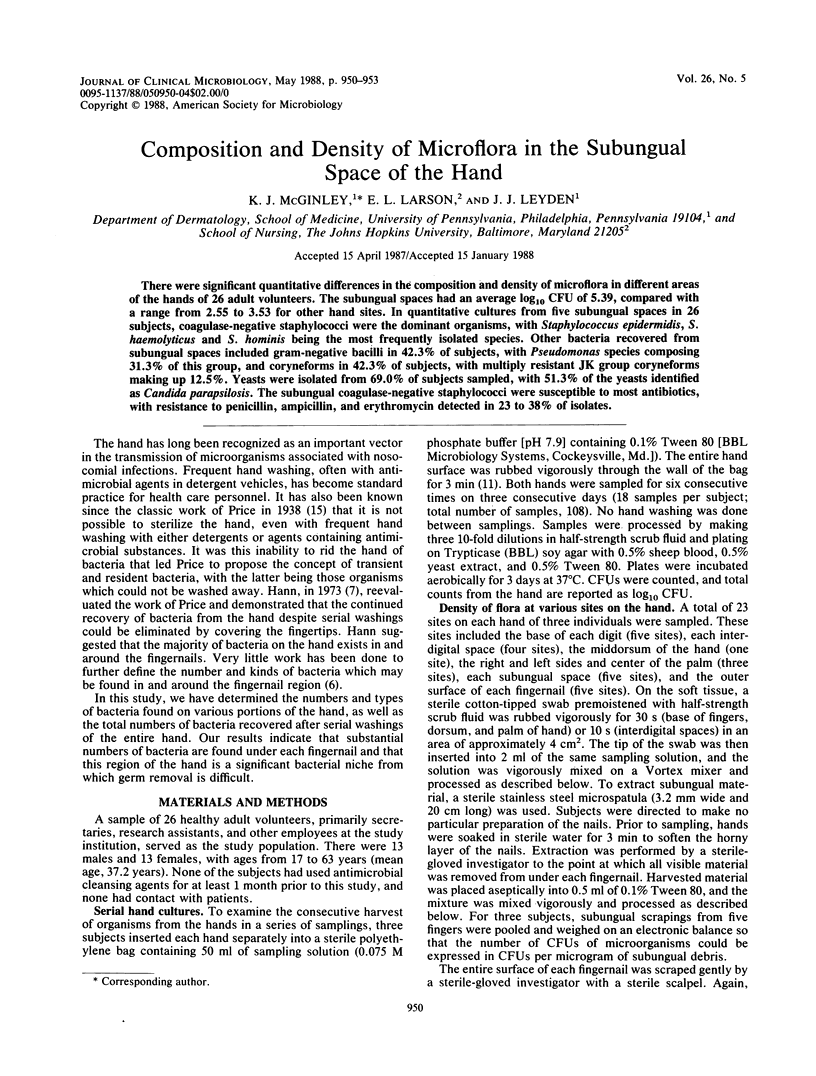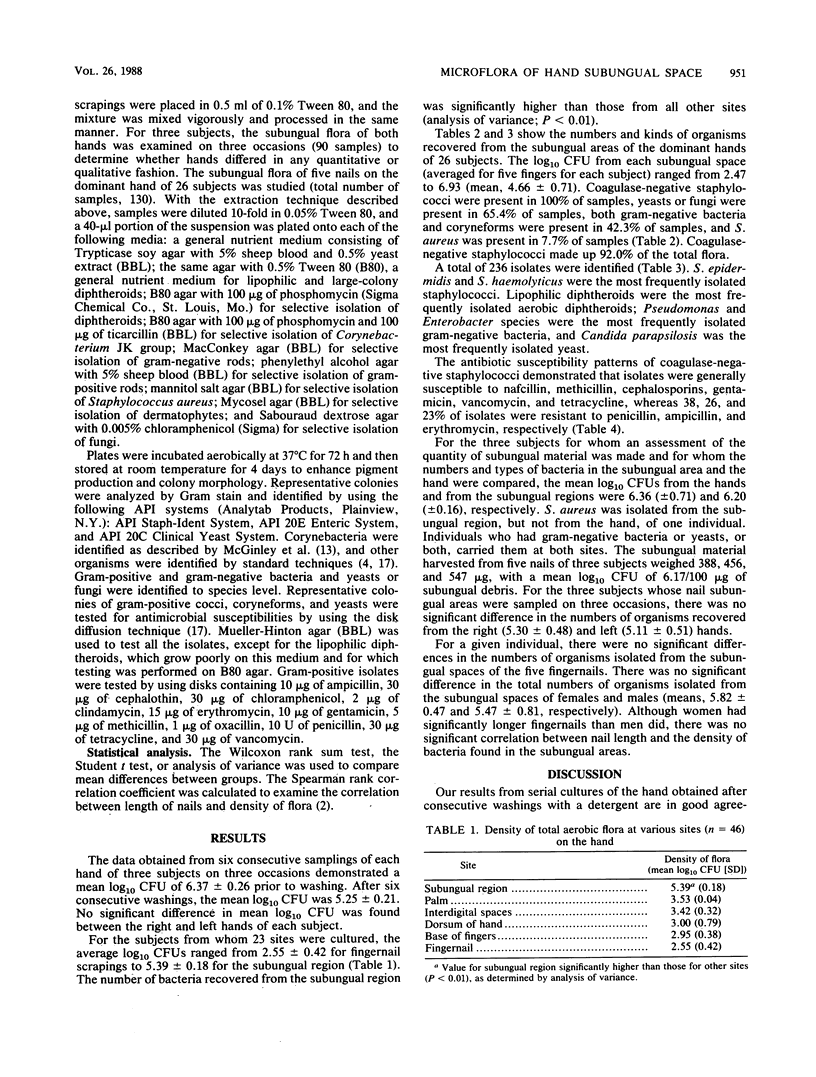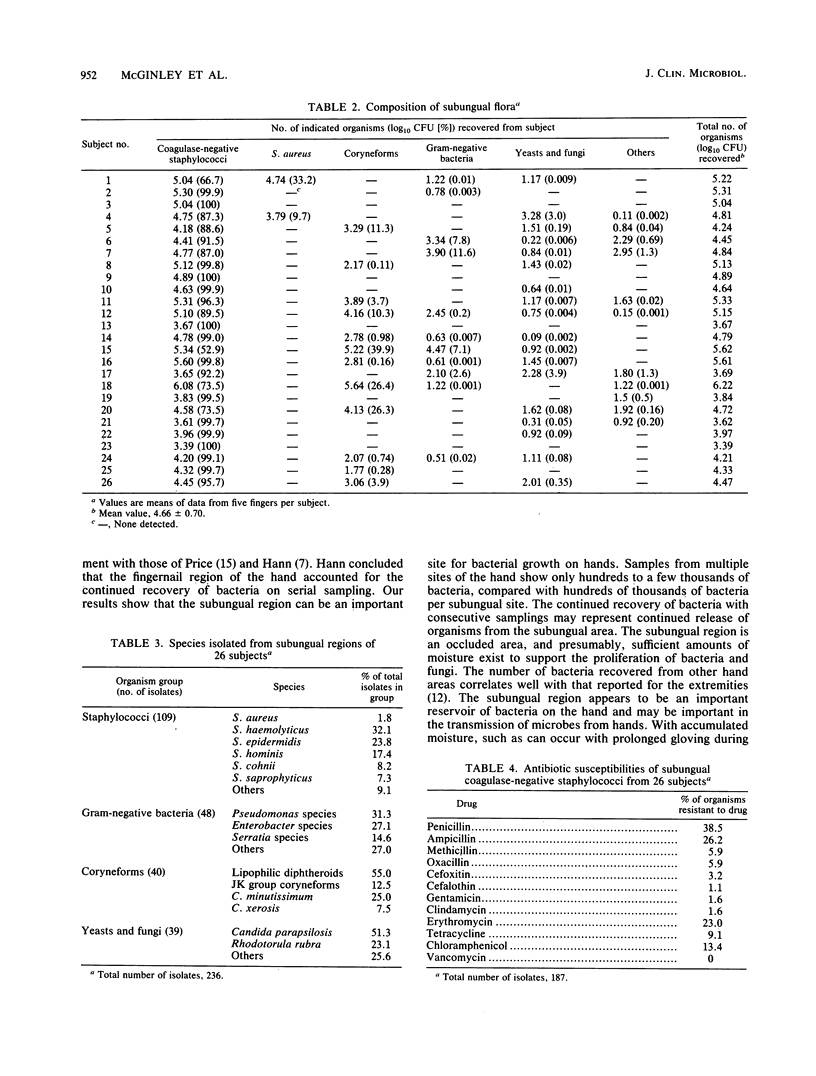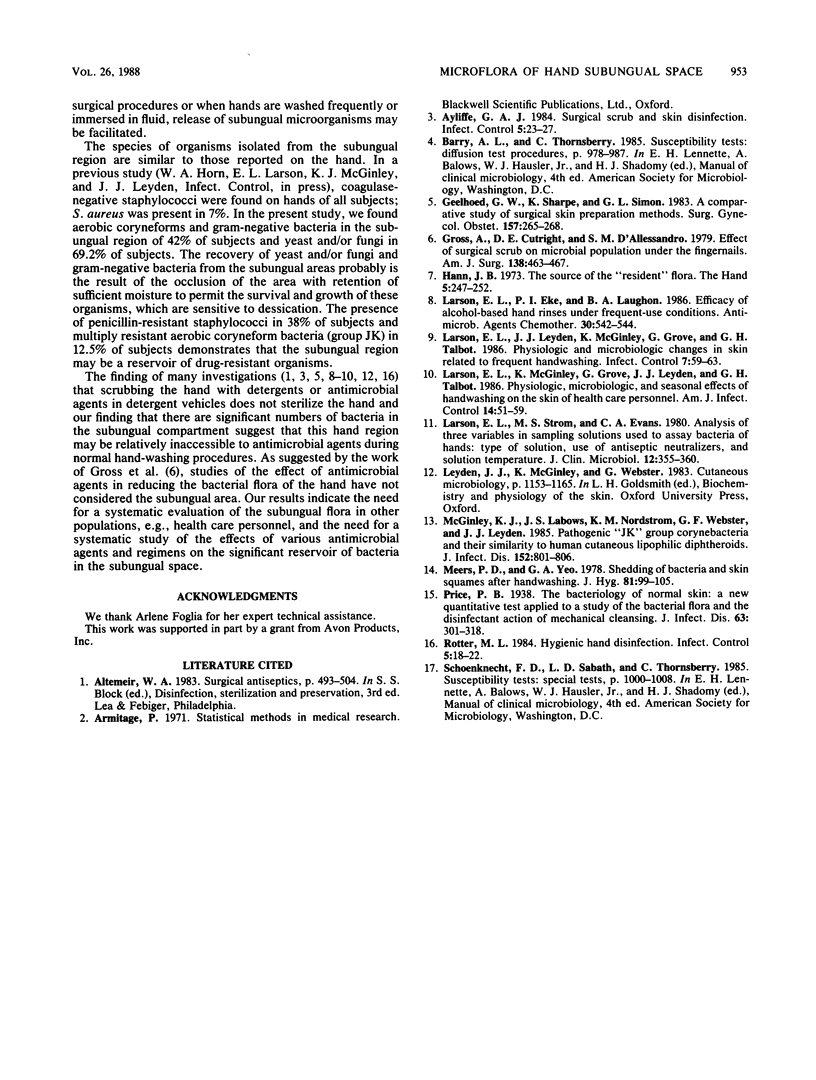Abstract
There were significant quantitative differences in the composition and density of microflora in different areas of the hands of 26 adult volunteers. The subungual spaces had an average log10 CFU of 5.39, compared with a range from 2.55 to 3.53 for other hand sites. In quantitative cultures from five subungual spaces in 26 subjects, coagulase-negative staphylococci were the dominant organisms, with Staphylococcus epidermidis, S. haemolyticus and S. hominis being the most frequently isolated species. Other bacteria recovered from subungual spaces included gram-negative bacilli in 42.3% of subjects, with Pseudomonas species composing 31.3% of this group, and coryneforms in 42.3% of subjects, with multiply resistant JK group coryneforms making up 12.5%. Yeasts were isolated from 69.0% of subjects sampled, with 51.3% of the yeasts identified as Candida parapsilosis. The subungual coagulase-negative staphylococci were susceptible to most antibiotics, with resistance to penicillin, ampicillin, and erythromycin detected in 23 to 38% of isolates.
Full text
PDF



Selected References
These references are in PubMed. This may not be the complete list of references from this article.
- Ayliffe G. A. Surgical scrub and skin disinfection. Infect Control. 1984 Jan;5(1):23–27. doi: 10.1017/s0195941700058756. [DOI] [PubMed] [Google Scholar]
- Geelhoed G. W., Sharpe K., Simon G. L. A comparative study of surgical skin preparation methods. Surg Gynecol Obstet. 1983 Sep;157(3):265–268. [PubMed] [Google Scholar]
- Gross A., Cutright D. E., D'Alessandro S. M. Effect of surgical scrub on microbial population under the fingernails. Am J Surg. 1979 Sep;138(3):463–467. doi: 10.1016/0002-9610(79)90288-5. [DOI] [PubMed] [Google Scholar]
- Hann J. B. The source of the "resident" flora. Hand. 1973 Oct;5(3):247–252. doi: 10.1016/0072-968x(73)90037-5. [DOI] [PubMed] [Google Scholar]
- Larson E. L., Eke P. I., Laughon B. E. Efficacy of alcohol-based hand rinses under frequent-use conditions. Antimicrob Agents Chemother. 1986 Oct;30(4):542–544. doi: 10.1128/aac.30.4.542. [DOI] [PMC free article] [PubMed] [Google Scholar]
- Larson E. L., Strom M. S., Evans C. A. Analysis of three variables in sampling solutions used to assay bacteria of hands: type of solution, use of antiseptic neutralizers, and solution temperature. J Clin Microbiol. 1980 Sep;12(3):355–360. doi: 10.1128/jcm.12.3.355-360.1980. [DOI] [PMC free article] [PubMed] [Google Scholar]
- Larson E., Leyden J. J., McGinley K. J., Grove G. L., Talbot G. H. Physiologic and microbiologic changes in skin related to frequent handwashing. Infect Control. 1986 Feb;7(2):59–63. doi: 10.1017/s019594170006389x. [DOI] [PubMed] [Google Scholar]
- Larson E., McGinley K. J., Grove G. L., Leyden J. J., Talbot G. H. Physiologic, microbiologic, and seasonal effects of handwashing on the skin of health care personnel. Am J Infect Control. 1986 Apr;14(2):51–59. doi: 10.1016/0196-6553(86)90055-6. [DOI] [PubMed] [Google Scholar]
- McGinley K. J., Labows J. N., Zeckman J. M., Nordstrom K. M., Webster G. F., Leyden J. J. Pathogenic JK group corynebacteria and their similarity to human cutaneous lipophilic diphtheroids. J Infect Dis. 1985 Oct;152(4):801–806. doi: 10.1093/infdis/152.4.801. [DOI] [PubMed] [Google Scholar]
- Meers P. D., Yeo G. A. Shedding of bacteria and skin squames after handwashing. J Hyg (Lond) 1978 Aug;81(1):99–105. doi: 10.1017/s0022172400053808. [DOI] [PMC free article] [PubMed] [Google Scholar]
- Rotter M. L. Hygienic hand disinfection. Infect Control. 1984 Jan;5(1):18–22. doi: 10.1017/s0195941700058744. [DOI] [PubMed] [Google Scholar]


